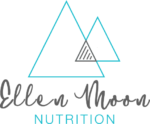Iron is an essential micronutrient for human health. It is involved in DNA & enzyme synthesis, oxygen transportation, erythropoiesis (production of red blood cells), metabolism and immune function.
Iron occurs in two forms in food: Haem iron and non-haem iron.
Haem Iron is found in food derived from the animals eg. meat, fish & poultry, about 55-70% is haem iron.
Non-haem iron is found in both plant & animal derived foods.
Meat, fish & poultry not only contain haem iron but also the MFP factor that promotes the absorption of non-haem iron eaten in the same meal.
Factors that inhibit absorption: some dietary factors bind with non-haem iron, inhibiting it’s absorption. Factors include the phytates in legumes, whole grains & rice, vegetable proteins in soybeans, other legumes & nuts, and polyphenols in tea, coffee, grain products, oregano and red wine.
Depletion of iron stores and iron deficiency occurs in all age stages. Particularly in populations such as children, women after the onset of menstruation, elderly, vegetarians and disadvantaged populations.
Iron deficiency without anaemia is associated with negative effects including lethargy, difficulty concentrating and poor immune function.
Low iron stores may also result in iron deficiency anaemia which is associated with poor physical, cognitive and immune development and function.
Sources: Animal sources – liver (chicken, lamb), sardines, kangaroo, beef, lamb, egg (chicken), duck, canned salmon. Plant base sources – legumes (such as lentils, beans and chickpeas), firm tofu, tempeh, pumpkin seeds (pepitas) and sunflower seeds, nuts, especially cashews and almonds, wholegrain cereals such as oats or muesli, wholemeal bread, brown rice, amaranth and quinoa, dried apricots and vegetables such as kale, broccoli, spinach and green peas.
Daily requirements: Men (adult) — 8mg. Women aged 19-50 — 18mg. Women 51+ — 8mg. Pregnant women — 27mg. Women breastfeeding exclusively – 9-10mg.

